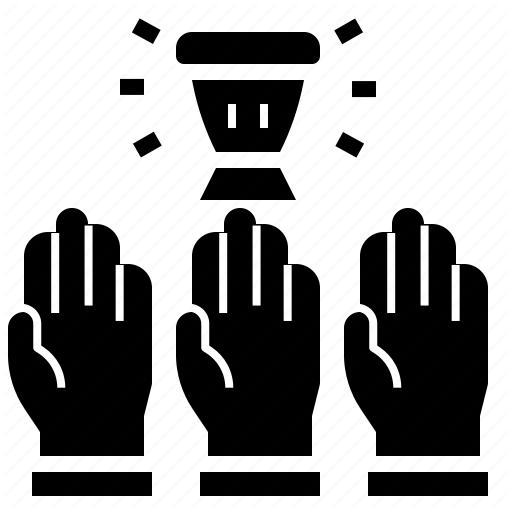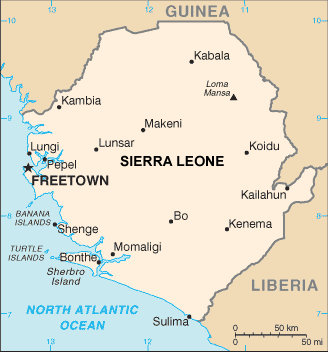Sierra Leone’s democratic journey – progress and setbacks (Part 1)
Political scientists and leaders in ancient and modern times agree that there are features that distinguish democracy from other political systems. These include the power of the majority, its limitation and control, separation of powers, the rule of law, and political pluralism. As the President of America puts it, “…the ingredient of real democracy …include free and fair elections, but also freedom of speech and the press, freedom of assembly….” (President Obama 2005).
Obama further asserts that Africa’s progress depends on democracy, because, like others elsewhere, “African people deserve the right to be in control of their own lives” (sic) . The emphasis, as in ancient Greek political thought, is that power is derived from the people; but also that the people should be able to enjoy certain freedoms in the democratic state.
Sierra Leoneans’ quest to ‘be in control of their own lives’ and for those ‘ingredients’ of free and fair elections, freedoms of the speech, the press and association, started well before independence and has been both peaceful and turbulent. It stretches as far back as in the mid 1840’s starting with a constitutional process that laid the foundation for political pluralism. Several movements and organizations had emerged agitating for greater independence. This led to several constitutional reforms albeit too gradually, dragging on to the late 50’s.
At the time, an independent judiciary guaranteed civil liberties such as freedom of association and expression; a very vibrant media ensured that those (critical) views were heard. Political activism therefore resulted in more representation and powers to the local people in the legislative and executive councils. These movements eventually morphed into the two main political parties – the Sierra Leone People’s Party (SLPP) and All People’s Congress (APC. The two parties had campaigned rigorously for self-determination, but on two different platforms. The APC under Siaka Probyn Stevens wanted independence and then elections, while the SLPP under Dr. Sir Milton Margai wanted independence and then elections. Margai and the SLPP carried the day – independence was granted to Sierra Leone on 27th April, 1961. These two parties, the SLPP and the APC have since dominated Sierra Leone’s politics.
The Turbulence Era
Several years down the lane in 1967, Sierra Leone conducted its first post-colonial elections, and then made history in Africa’s nascent democracy; the opposition APC had wrestled power from the incumbent SLPP through the ballot box. But the country’s impressive democratic journey was rudely interrupted and reversed by a military intervention led by the army commander Brigadier David Lansana. Lansana arrested the Governor-General who was representing the British Monarch as head of state. He suspended the constitution and imposed “Marshal Law”, forcing the elected Prime Minister Siaka Probyn Steven into exile.
Not everybody in the army agreed with the Brigadier, a counter coup by junior officers removed him and invited Stevens from exile to form a government. This repositioned Sierra Leone back on the democratic trajectory. But since then, political tensions have been high between the two political parties.
In 1971, with a new constitution, Stevens removed the last colonial vestige by declaring Sierra Leone a republican state. This means that the position of Governor General was no longer applicable; the British Queen had ceased to be the head of state of Sierra Leone – the country’s independence struggle was now complete with Siaka Stevens as executive president.
However, Sierra Leone never fully recovered from the reversal of its democratic journey; coups and counter coups dotted the country’s political landscape and badly dented its democratic credentials. Stevens returned from exile apparently hardened and brooked no opposition; the media was muzzled and civil liberties curtailed. Power was no longer coming through the majority will via free multi-party elections. Sierra Leone like many other African countries at the time eventually degenerated into one party. Stevens ruled for near two decades until 1984 when he voluntarily handed over power to his chosen successor; a benign army commander – Major General Joseph Saidu Momoh. The Major General inherited a depressed country – the economy was shabby, state institutions were run down and the political class was in reverie.
The returns to Multi-Party Democracy, but…
Although he did not possess the political shrewdness and hard fist of his predecessor, President Momoh managed to keep the country together until 1991 when he sought to return Sierra Leone to multi-party democracy.
Momoh established a commission to review the one party constitution and appointed Dr. Peter L. Tucker to superintend the (review) process. The exercise resulted in what became known as ‘The 1991 Peter Tucker Constitution’ which set the stage for multi-party democracy. President Momoh acceded to the new constitution and set a timetable for multi-party elections. Several numbers of his government broke off to form their own political parties.
His Vice President, Salia Jusu Sheriff, resigned from his Government and was earmarked to lead the SLPP. Political parties held rallies and started campaigning, but this democratic dispensation under President Momoh would not see the light of day, a rebel insurgent had emerged in the Eastern part of the country. By 1992, the rebels of the Revolutionary United Front (RUF) were gaining grounds in the battlefields and were demoralizing the Sierra Leone Army.
On Wednesday 29th April that year, while political parties were busy campaigning around the country, an intemperate group of military officers led by Captain Valentine Esegrebo Melvin Strasser stormed the capital and overthrew the Momoh regime. History repeated itself; the young soldiers branding themselves the National Provisional Ruling Council (NPRC) suspended the constitution, banned all political activities and ruled by decrees.
The NPRC almost four years rule was murky, acclaimed by extra judicial killings that shocked the country and the international community. Civil liberties were curtailed and corruption and mismanagement were once again rife. By 1995, the regime had come under serious pressure by local and international actors urging them to step aside.
Civil Society, Bintumani I & II and Restoration of Democracy
The NPRC’s unpopularity had reached a crescendo and had inspired civil society groups to coalesce in opposition to the military junta. The Campaign for the Restoration of Democracy consisted of several interest groups, reinforced by politicians whose activities the coup had disrupted. All this opposition to the military rule received tremendous support from the international community. At the same time, the war was raging and the military continued to lose grounds.
The citizens were anxious to see the back of the army. The NPRC acquiesced and promised to return the country to civilian rule, but not without a fight. The regime wanted to hold on to power until ‘peace was won,’ but nobody believed that the NPRC would be able to bring peace and everybody regarded the junta’s argument as a pretext to perpetuate their stay in power.
A conference was organized at Bintumani Conference Centre in Freetown to determine whether the country wanted the military to continue peace negotiations with the insurgents or to hold elections. The Bintumani I, as it later became known, overwhelmingly supported elections before peace. The people of Sierra Leone had exercised their right to determined what they wanted.
Consequently, the NPRC announced a timetable for the conduct of multi-party elections. But it turned out that Sierra Leone’s democratic transition was still hanging in the balance. Captain Julius Maada Bio overthrew Captain Strasser in a palace coup on the accusation that Strasser was derailing the democratic process. But suddenly, Bio re-introduced the peace before elections argument, made some overtures to the rebels which observers say he wanted to use as an excuse to cling on to power.
The new military strongman, who had promoted himself from Captain to a Brigadier, had suddenly succeeded to have direct talks with the elusive rebel leader, Foday Sankoh. For the first time, Sierra Leoneans learned about and saw images of the man who was inflicting untold suffering on an ordinary poverty-stricken country.
Despites those strides, the campaign for the restoration of democracy and the people of Sierra Leone remained unimpressed and pressed on Bio to stick to the elections timetable already announced by his predecessor. The sustained agitation for a return to civilian rule and the new NPRC’s intransigence to negotiate peace before elections resulted in the Bintumani II Conference. For the second time the people of Sierra Leone objected to the military’s continued stay in power. The young Brigadier capitulated and multi-party elections were held under the 1991 Constitution; Sierra Leone was finally back on the democratic track.
More than ten political parties, including the APC, conducted the Presidential and Parliamentary Elections in 1996 in the face of violence. In addition to the junta’s reluctance, the rebels had vowed to disrupt the elections. Several villages were attacked in the run up to the elections; many innocent people were killed and others had their hands amputated with a message to the rest of the country not to vote in the forthcoming elections.
The people’s determination to remove the army was stronger and on polling day, Sierra Leoneans turned out in huge numbers to vote. The SLPP under Dr. Ahmad Tejan Kabbah emerged as winner after a run-off with United National People’s Party (UNPP) of Dr. John Karefa Smart. The People’s Democratic Party (PDP) of Thaimu Bangura became the ‘third force’, while the APC managed to stage a comeback winning five seats in Parliament.
The 1996 multi-party election was a victory for Sierra Leone’s long quest for pluralism and democratic freedom so succinctly captured her national motto – Unity, Freedom and Justice.
The AFRC Interregnum
Sierra Leone had achieved democracy, but not quite. In just a little over a year, led by Corporal Tamba Gborie, a group of nincompoop soldiers calling themselves the Armed Forces Revolutionary Council (AFRC), overthrew the democratically elected government of President Ahmad Tejan Kabbah on Sunday 29th May, 1997. Gborie and his colleagues released Major Johnny Paul Koroma from prison and designated him as their leader.
Johnny Paul Koroma invited the RUF to join them. With the terrifying combination, democracy, like many Sierra Leoneans, was summarily executed. Like Stevens, President Kabbah fled and sought refuge in Guinea, but this time, it was the Nigerian army, under the aegis of ECOMOG’s military wing, ECOMOG that had o intervene. The international force led one of the bloodiest military interventions to ‘restore democracy’ and President Kabbah’s government. The resistance from the insurgent was so stiff that the Nigerian army, almost humiliated, abdicated conventional military discipline; the consequences were calamitous.
Excessive human rights abuses were committed and many people were maimed and killed. Eventually, the AFRC and its rebel alliance were chased out of the capital and Kabbah was reinstated. Like Stevens, Kabbah returned with a different personality.
In his case, he lost confidence in the national army, (disbanded it) and recruited civil militia in their stead, while at the same time he maintained a strong presence of the Nigerian army. The threat from the insurgent had become even worse; the AFRC and RUF rebels splintered back into the bush and other parts of the country. A deadly force from the disgruntled Sierra Leone Army known as the West Side Boys also emerged.
Between 1997 and 1998 Sierra Leone was effectively in a state of nature, the nation was disintegrating. While the Nigerian military and the civil militia battled the insurgents, the United Nations had to intervene with the largest peacekeeping force ever. The British also had to take on the West Side Boys who were holding hostage some British military personnel.
The West Side Boys has carved a horror image of themselves by attacking (military) convoys and causing havoc on the villages, just outside the capital, Freetown. They were pulverized and the government of President Ahmad Tejan Kabbah negotiated peace with the RUF, and later invited its leadership to participate in a government of national unity.
The RUF disarmed, rather partially and transitioned into political party – the Revolutionary United Front Party (RUFP). Nonetheless, and in spite of its transition, the RUFP retained its militant character and was threatening the peace all over again. It held hostage UN peacekeepers and threatened to seize power.
A civil demonstration led mostly by women and students, resulted in the arrest, trial and detention of Foday Sankoh and some of his commanders by the UN-backed Special Court for Sierra Leone. Other extra-combatants included the leader of AFRC and the SLPP wartime Deputy Minister of Defense – Chief Samuel Hinga Norman, were indicted for “bearing the greatest responsibilities” for the human rights abuses in the conflict.
Culled from News Watch Magazine Vol. I No. I December 2015 – February 2016
By Sheriff Mahmud Ishmail
Stay with Sierra Express Media, for your trusted place in news!
© 2016, https:. All rights reserved.






